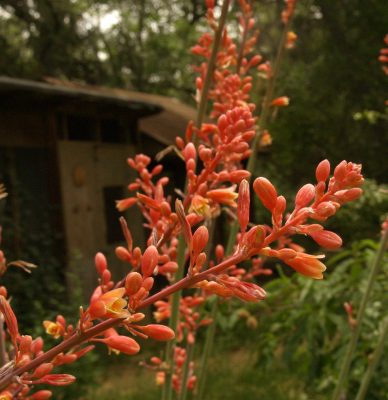What happened to this Afghan pine?
Thanks to Frank Simon for sending us this question and picture! In 1996, his family planted it as a living Christmas tree. It did well for years, but started to fail recently.
This is a great question, and, unfortunately, a common occurrence with Afghan pines, which were introduced into the nursery trade about 50 years ago. Since we, as consumers, are always on the lookout for new and different plants, we tend to covet what we don’t have. And you don’t need to drive far to witness, and covet, the majestic pines of east Texas, and you might wonder, why don’t we have more of those in Central Texas, only a few miles away?
Well, one reason is our soil. Pine trees prefer acidic soil, and our soil is alkaline. Then, some enterprising person noticed the native pines in Afghanistan and thought, “Hey, this might be just the pine for us.”
And in some respects, they were right. Afghan pines do very well in arid, alkaline areas of the Southwestern U.S. Unfortunately, Central Texas is just on the cusp, between east and west, and so our climate is not quite western-ly enough for Afghan pines, but not quite eastern-ly enough for other pines.
So, back to Frank’s question: why is his Afghan pine struggling now, after having done so well for over 15 years? And the answer relates back to our climate. Although our soils are alkaline, which the Afghan pines prefer, our climate is not as arid as Afghanistan. Even in a low-rainfall year, we still get about twice as much rain as the native area of this pine tree. And our air is more humid as well. So these trees will do great until all the “small” issues that they have with our climate begin to pile up and exacerbate the problem, leading to a steady decline in health and an inability to recover.

 Lynne Wernli
Lynne Wernli Daphne Richards
Daphne Richards
 Trisha Shirey
Trisha Shirey